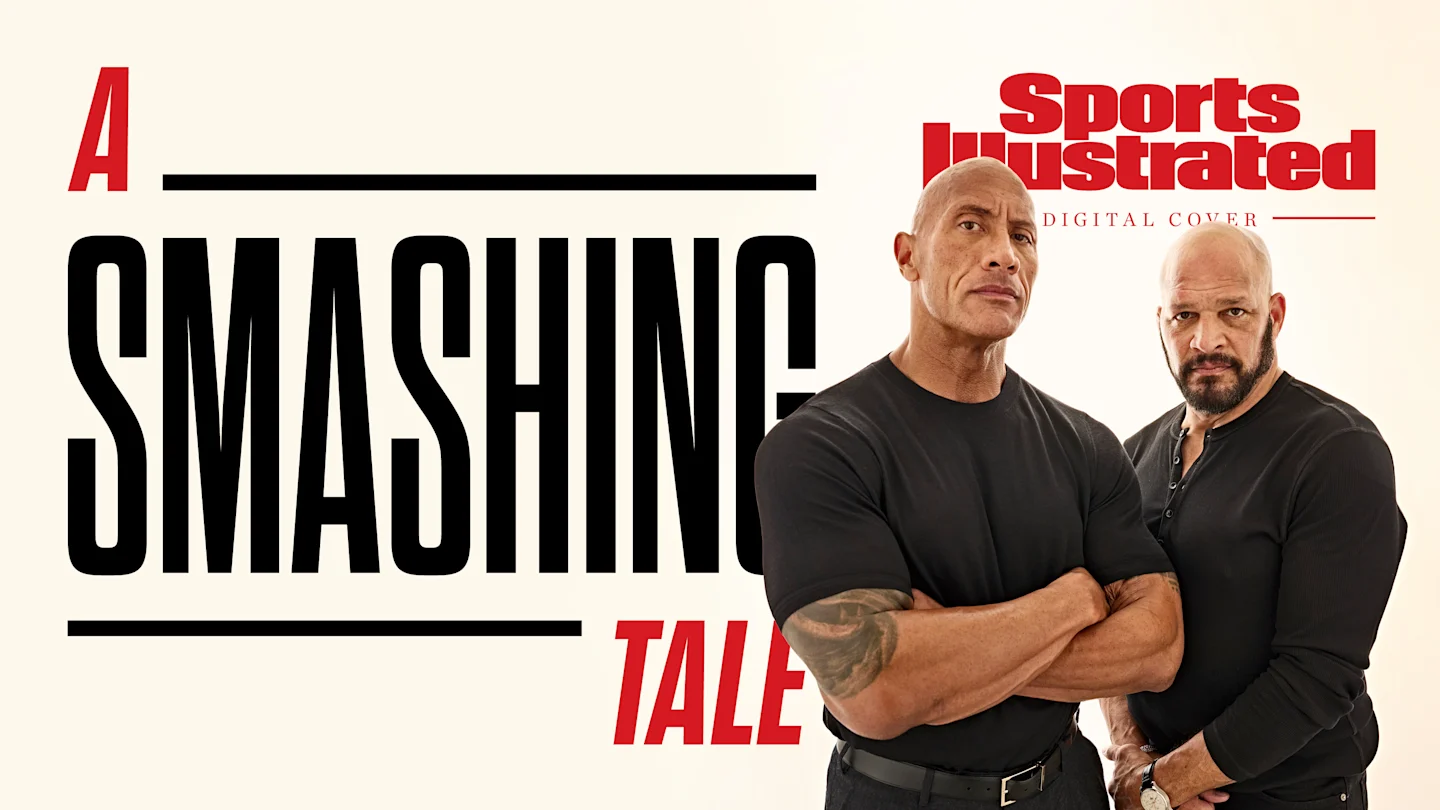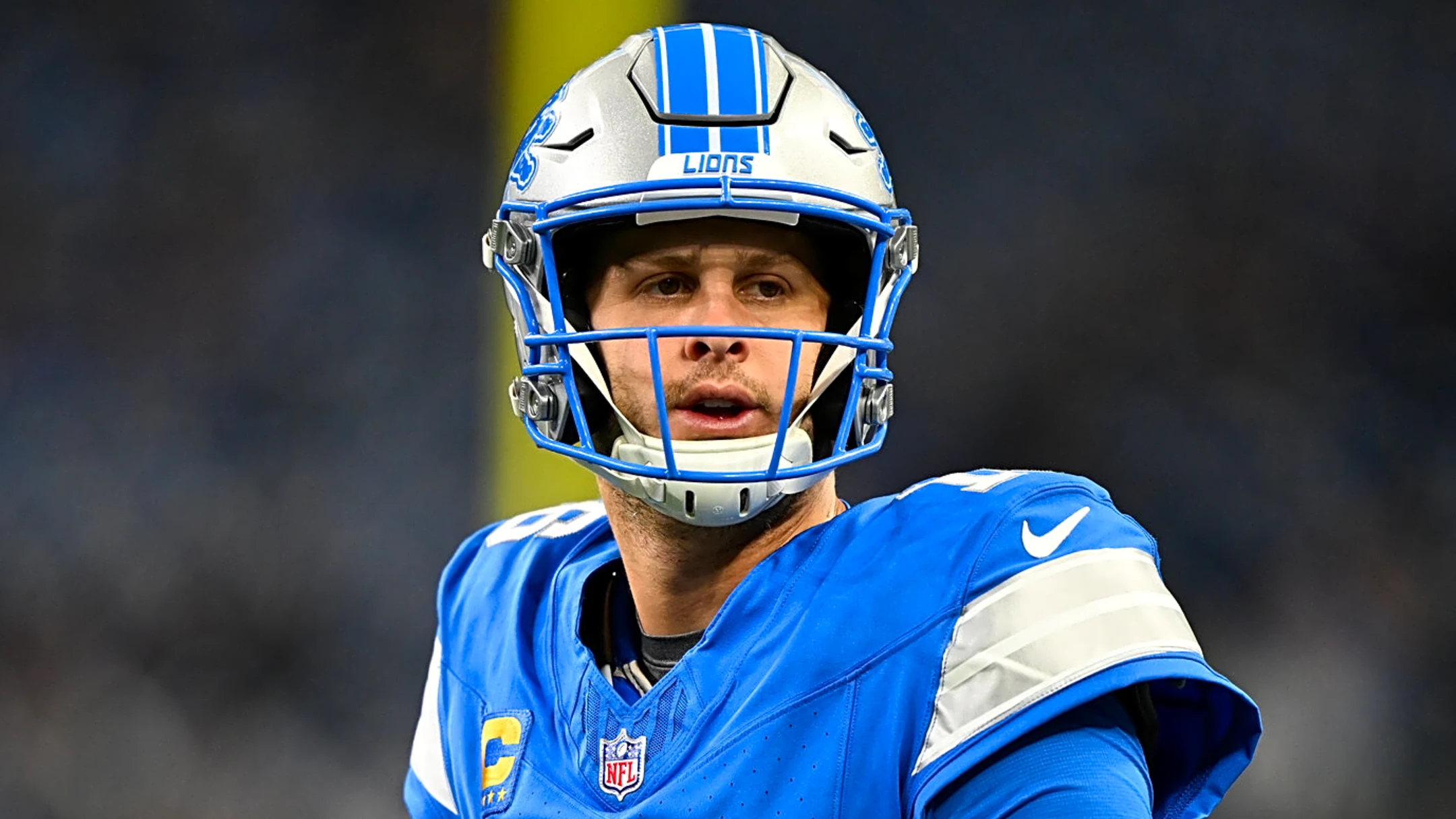What Pushed Dwayne ‘The Rock’ Johnson to Transform Into Mark Kerr for ‘The Smashing Machine’

True to its name, The Smashing Machine is an exercise in brutality, full of crashes, fights and collisions leaving shards, both orthopedic and emotional. The 2002 documentary tour de force chronicles the rise and fall of Mark Kerr, d/b/a the Smashing Machine, a hard-on-the-outside, soft-on-the-inside Ohio fighter. Now comes the scripted version. Dwayne Johnson, d/b/a The Rock, plays Kerr in the film of the same name, which releases on Oct. 3, and enters the fray carrying the distinct whiff of Oscar nominations.
The movie tells the story of Kerr, a hulking college wrestler who then launched a career in the punk rock sport of mixed martial arts. All was going, well, smashingly … until it wasn’t. Until he went from smasher to smashee. In an arresting early scene, Kerr sits in a doctor’s waiting room, alongside other patients seeking bunion removals and strep throat swabs and the like. Kerr is seeing the doctor for another reason: He needs his face put back together.
This, though, is no formulaic sports biopic. It’s less Rocky than Leaving Las Vegas, a journey of addiction, first to the adrenaline rush that comes with sanctioned violence—“When you win, nothing else in the world matters,” Kerr says early in the film—then a compulsion for pain pills. This is also a story of relationships: a doomed romantic one; a fraught dynamic with a mentor, Mark Coleman, who is also an early-days MMA fighter; a personality reckoning with a sport that is both so intoxicating and so damaging.
Undergirding it all are two existential through lines: When your reason for being is to do something physical, what happens when your body stops cooperating? When you believe you are indomitable, what happens when you experience defeat?
The Smashing Machine also doubles as a time machine. Set in the late ’90s, Kerr’s story exists before MMA and the UFC had penetrated the defenses of the mainstream. This was a pre-Dana White, pre-pay-per-view (much less cable; much less cards set at the White House and broadcast on CBS) era, when a lack of rules and regulations was part of the outlaw appeal, and nothing could be said or written about the UFC without inevitably referencing John McCain’s analogy to “human cockfighting.” MMA was sanctioned in only a few states, and fighters were better off heading to Japan—as Kerr and Coleman did—to participate in PRIDE Fighting Championships events.
The first film directed solo by Benny Safdie—who usually tag- teams with his brother, Josh, in films including the insta-classic Uncut Gems—The Smashing Machine is faithful to the source material, the preceding doc and the legacy of Kerr. In addition to Johnson, Emily Blunt costars as Kerr’s complicated love interest. An assortment of familiar MMA figures are featured as well, including former fighter Ryan Bader, who acquits himself well as Coleman.
One sentence review: The film nails it.
The large but also the small details, such as the foggy walk losing fighters must make from the cage to the dressing room … and the genuine affection that passes between fighters who, minutes earlier, were beating the stuffing out of each other … and the omnipresence of pain. When the film premiered at the Venice Film Festival in September, where Safdie was named best director, the audience reacted as if seeing a brilliant knockout, all open-mouthed oohs and aahs and cheers during a prolonged standing ovation that left the principals in tears.
For all the fine bits of filmmaking and poignant storytelling, this is ultimately a Dwayne Johnson star vehicle. Johnson holds on to Kerr’s character and never lets go. Similar in body type and disposition and born within a few years of each other, it’s clear there was a kinship and connection between subject and portrayer.
SI: Why was this the right film at the right time?
Dwayne Johnson: I felt like there was some real connective tissue with Mark’s life and my own. Sure, today. But in the ’90s there were a lot of crossings in our worlds. There were a lot of pro wrestlers who then joined PRIDE. A lot of MMA guys came to wrestling. And I was always in awe of Mark.
As the years went by, we both suffered a lot of losses. We lost a lot of friends to addiction and to suicide—there was a rash in both of our businesses in those late ’90s, early 2000s. When I watched the [Smashing Machine] documentary years ago, I had just started acting. I felt then, “God, I would love to play Mark Kerr.”
Cut to 2019. I [buy] the project. I lock the rights down. We connect with Mark. I speak to Mark, whom I had known 20 years earlier. And it all started to come together. And I met with Benny. We agreed to do it in 2019. And then COVID hit and shut everything down. Mark went his way. Benny went his way. I went my way, trying to figure life out.
And years later, I realized how personal it was. I realized that I needed to tell this story, because I have a profound respect for Mark and MMA and all the men and women who give it up and leave it all in the cage or in the ring. But in addition to that, I felt that I needed to break free and make this kind of film where I could dive deep and I could test and challenge myself. And I could get really raw and rip myself open, with a costar, who I’ve known and been best friends with for many, many years in Emily Blunt.
SI: It was that personal?
DJ: Yes. It’s turned into more than a movie. It represents me, ready to break out of the infrastructure that has surrounded me for a long time, making these big movies—that I’ve loved and they’re fun—but I always felt there’s a voice behind my rib cage telling me, “There’s more, right? There’s more to do.”
SI: Mark, how’d he do? Did you recognize yourself?
Mark Kerr: So the first time I walked on set, we’re in this arena [in Vancouver] and they’re getting ready to do the introduction for the PRIDE Grand Prix. DJ is the last one to come in the ring. Nobody tells me he’s getting prosthetics. Nobody tells me they’re going to do this cauliflower ear. I’m looking in the ring and DJ’s walking up behind me, and I turn around. All I could do is cuss at him. All I could do is just literally look at him and go, “Oh my God, dude. F— you.” It was this out-of-body experience.
My son saw [the film] in New York. He’s almost like whispering on the phone, “Dad, he’s got your hand movements, and he’s got your speech pattern, he even walks like you. It was uncanny.”
DJ: I felt like I had to do this. And this was the great challenge of my life, of my career … this was a very physical transformation. This guy’s body is crazy. In his prime, he was 270-275 pounds, just a unicorn of a [body] with fast-twitch fibers. Benny said, “I don’t know how to actually say this to you, but I think you’re going to have to get bigger.”
That’s when I went into a 12-week training camp with MMA coaches and fighters to help the transformation. And [there was] the vocal transformation. Liz Himmelstein was my vocal coach; she helped Emily on Oppenheimer. So she and I just studied Mark’s speech pattern. Mark is this walking contradiction: a beast of a man, but also very soft-spoken, very caring. It was a lot to transform. But I loved every second.
SI: How much weight did you end up putting on in total?
DJ: Roughly 30 to 32 pounds, which is a lot of weight. But also I had to be able to move with that weight.
SI: Mark, what specifically made you nervous before you fought?
MK: Towards the end, I couldn’t find that switch. When I first started fighting, I had to find something deep in me to flip a switch to inflict that much physical pain on somebody. In fighting, you have to have the ability to take something somebody doesn’t want to give you: their will to win. I’m in the ring to inflict just enough pain and damage on you.
I watched film of myself walking down to the ring, and I couldn’t recognize my facial expression and my demeanor. It was like this completely different personality and persona. I had to literally transform into a completely different person to get there, to inflict this much damage on a human being. I was like, I just can’t do this anymore.
DJ: From my vantage point, you realize that there’s the machine, and then there’s the human being within the machine. And you also realize that it’s not too dissimilar to our world of pro wrestling. And that’s what I wanted to access with Mark.
I wanted to make sure that my delts and my traps looked like his. I felt moderately confident that we could nail the physicality part. But it’s the emotional part that I wanted access to. Even in performative combat, like in pro wrestling, you’ve got the toughest of guys. But in the end, when it’s done, it’s done. And we have this [custom] where we hug and we say, “Thank you.” I asked Mark about this. He would demolish these dudes, wreck them. But he’d also want to make sure that they were O.K.
SI: Mark, what other little details did the film get right?
MK: Even in preproduction, they’re putting together all the set pieces and costumes. I’d walk into a room, and it would just be screen grabs, pictures of me, pictures of my house, pictures of the clothes I wore. I could see why DJ completely got lost in the total immersion in that environment. I mean, they built four rooms in my house from 25 years ago.
SI: DJ, what nuance struck you about MMA as you immersed yourself and really saw how the sausage gets made?
DJ: The humanity of it. I’ve had the honor and privilege of being in performative combat where I can say to my opponent, “Take care of my arm tonight, take care of my knee. I’ll take care of your back. Let’s get through the night, and let’s not get hurt. Let’s get home to our family. Let’s pay our bills.” With this kind of combat, you don’t have that luxury, and your life is on the line. That really moved me.
SI: I feel like there was a sub-theme in the film of fatherhood and lineage. I wonder if you guys bonded at all over your fathers, who I know both spent time on the road. And you guys are of a similar age.
DJ: We bonded over everything, brother.
MK: Yeah, there’s a shared story there. He and I have talked about [those] relationships, as difficult as it was at times, and all these other complexities. My dad wasn’t a man of many words, and was on the road and doing construction. [Johnson’s father spent years as a touring professional wrestler], a lot of those same parallels. There’s just been these levels of bonding where it’s like, man, we share so much in our experiences.
There’s a lot of respect between us, man. So, yes, if you want to call it a bromance, yes, it is.



